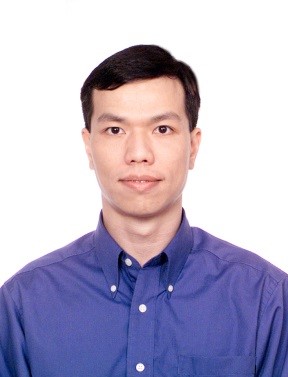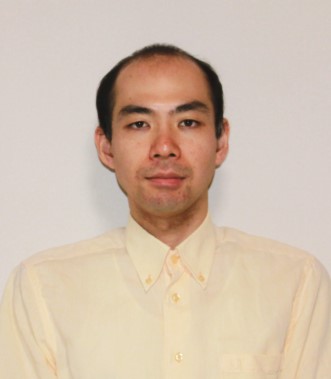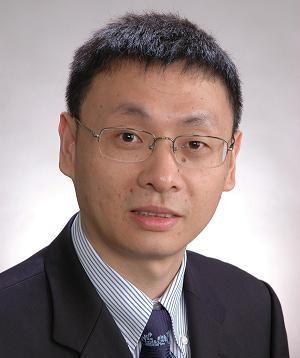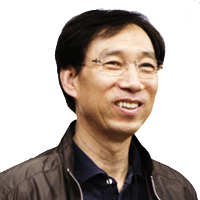IAPR Keynote Lecture
Prof. Martial Hebert

Title: Coherent Occlusion Reasoning for Instance Recognition
Abstract: Recognizing objects and understanding scenes, remains a difficult task. For example, objects may not lend themselves to standard feature matching techniques. They may lack distinctive markings and texture and they may have uniform surfaces with challenging reflection patterns. In addition, they be in scenes within high degree of clutter and occlusion that further complicates the task of recognition algorithms. Finally, since it is impossible to generate in advance models of all possible object instances, they need to be automatically generated from data in an unsupervised way. This talk reviews recent progress in recognition and scene understanding from images and 3D data to address these challenges, with particular attention given to the practical challenges of using these techniques in robotics systems.
Bio: Martial Hebert is a Professor, Robotics Institute at Carnegie-Mellon University. His interest includes computer vision, especially recognition in images and video data, model building and object recognition from 3D data, and perception for mobile robots and for intelligent vehicles. His group has developed approaches for object recognition and scene analysis in images, 3D point clouds, and video sequences. In the area of machine perception for robotics, his group has developed techniques for people detection, tracking, and prediction, and for understanding the environment of ground vehicles from sensor data. He has served on the editorial boards the IEEE Transactions on Robotics and Automation, the IEEE transactions on Pattern Analysis and Machine Intelligence, and the International Journal of Computer Vision (for which he currently serves as Editor-in-Chief). He was Program Chair of the 2009 International Conference on Computer Vision, General Chair of the 2005 IEEE Conference on Computer Vision and Pattern Recognition and , is serving as Program Chair of the 2013 edition of this conference.
IAPR Banquet Talk
Prof. Junichi Tsujii

Title: How did Newton find the law of gravitation?
Abstract: There has been a long debate between rationalists and empiricists. Proponents of “Big Data” claim that data is everything. By analyzing data, we can reach the truth. They are empiricists in nature. Another camp is the camp of rationalists who claim that we need scientific hypotheses or theories at the very beginning, by which one can define what ‘data’ is and analyze them. The question we have to address is how far we can go just by observing data, without theories. Related questions are whether theories of data analyses, i.e. statistical science and machine learning, are enough or we need more domain specific theories, whether observation of external behavior is enough or we need hypotheses on internal computation, whether a conversational agent such as ELIZA can be seen as a model of intelligence or it is simply a farce, etc.
Bio:
Junichi Tsujii Principal Researcher of Microsoft Research Asia (MSRA). Before joining MSRA (May, 2011), he was Professor of Natural Language Processing in the Department of Computer Science, University of Tokyo and Professor of Text Mining in School of Computer Science, University of Manchester, U.K. . He remains to be scientific advisor of the UK National Centre for Text Mining (NaCTeM) as well as visiting professor of University of Manchester.
He has worked since 1973 in Natural Language Processing, Question Answering, Text Mining and Machine Translation. He has received a number of awards such as the IBM Science Award (1989), SEYMF Visiting Professorship (2000), Daiwa-Adrian Prize (2004), IBM Faculty Award (2005) and Achievement Award of Japan Society for Artificial Intelligence (2008), Fellow of Information Processing Society Japan (2010) and the Medal of Honor with Purple Ribbons (2010).
He was President of ACL (Association for Computational Linguistics, 2006), President of IAMT (International Association for Machine Translation (2002-2004), and President of AFNLP (Asian Association for Natural Language Processing, 2007). He is Permanent member of ICCL (International Committee for Computational Linguistics, 1992-) and its Vice-Chair (2012-), Member of the advisory board of Institute of Information Science, Academia Sinica in Taiwan (2011-), Member of SIG:MA (Scientific Innovation Group: Mentors and Advisors), Elsevier Inc. (2012-), etc.
IAPR Invited Talks
Prof. James Kwok

Title: Learning from High-Dimensional Data in Multitask/Multilabel Classification
Presentation slide: PDF
Abstract: Real-world data sets are highly complicated. They can contain a lot of features, and may involve multiple learning tasks with intrinsically or explicitly represented task relationships. In this paper, we briefly discuss several recent approaches that can be used in these scenarios. The algorithms presented are flexible in capturing the task relationships, computationally efficient with good scalability, and have better empirical performance than the existing approaches.
Bio: Prof. Kwok is a Professor in the Department of Computer Science and Engineering, Hong Kong University of Science and Technology. He received his B.Sc. degree in Electrical and Electronic Engineering from the University of Hong Kong and his Ph.D. degree in computer science from the Hong Kong University of Science and Technology. Prof. Kwok served as an Associate Editor for the IEEE Transactions on Neural Networks and Learning Systems from 2006-2012, and was Program Co-chair for IJCNN-2012, ICONIP-2011 and ISNN-2010. He is currently an Associate Editor for the Neurocomputing journal, and a Governing Board Member of the Asia Pacific Neural Network Assembly (APNNA).
Prof. Yasushi Makihara

Title: Towards Robust Gait Recognition
Presentation slide: PDF
Abstract: Gait recognition is a method of biometric person authentication from his/her unconscious walking manner. Unlike the other biometrics such as DNA, fingerprint, vein, and iris, the gait can be recognized even at a distance from a camera without subjects' cooperation, and hence it is expected to be applied to many fields: criminal investigation, forensic science, and surveillance. However, the absence of the subjects' cooperation may sometimes induces large intra-subject variations of the gait due to the changes of viewpoints, walking directions, speeds, clothes, and shoes. We therefore develop methods of robust gait recognition with (1) an appearance-based view transformation model, (2) a kinematics-based speed transformation model. Moreover, CCTV footages are often stored as low frame-rate videos due to limitation of communication bandwidth and storage size, which makes it much more difficult to observe a continuous gait motion and hence significantly degrades the gait recognition performance. We therefore solve this problem with (3) a technique of periodic temporal super resolution from a low frame-rate video. We show the efficiency of the proposed methods with our constructed gait databases.
Bio: He received the BS, MS, and PhD degrees in engineering from Osaka University in 2001, 2002, and 2005, respectively. He is currently an assistant professor of the Institute of Scientific and Industrial Research, Osaka University. His research interests are computer vision and pattern recognition, in particular, image segmentation, image morphing, temporal super resolution, score-level fusion, and their applications to gait recognition. He has 50 publications in major international conferences (e.g., CVPR, ECCV, ACCV, ICPR, FG) as well as journal papers. He has also written eight reports of expert evidence on gait-based person verification at the request of police.
Prof. Yan Shuicheng

Title: Magic Mirror: An Intelligent Fashion Recommendation System
Abstract: This talk mainly introduces the techniques required for a future system, called Magic Mirror. Imaging that, one day, when you get up from sleep, the magic mirror is linked with your calendar and knows the events and activities for you today, the magic mirror shall automatically recommend for you the hairstyle, makeup style, clothes to wear, and other carrying/wearing items, such that you can attend those activities with elegant and suitable outlook. The talk shall focus on the mathematical models for these tasks, particularly on how to model the relations between low-level human body features, middle-level facial/body attributes, and high-level recommendations. Automatic and intelligent are the two main characteristics for the whole system, and this talk shall show two prototype sub-systems related with the whole Magic Mirror system.
Bio: Dr. Yan Shuicheng is currently an Associate Professor in the Department of Electrical and Computer Engineering at National University of Singapore, and the founding lead of the Learning and Vision Research Group (http://www.lv-nus.org). Dr. Yan's research areas include computer vision, multimedia and machine learning, and he has authored/co-authored over 300 technical papers over a wide range of research topics, with H-index of 40. He is an associate editor of IEEE Transactions on Circuits and Systems for Video Technology (IEEE TCSVT) and ACM Transactions on Intelligent Systems and Technology (ACM TIST), and has been serving as the guest editor of the special issues for TMM and CVIU. He received the Best Paper Awards from ACM MM’12 (demo), PCM'11, ACM MM’10, ICME’10 and ICIMCS'09, the winner prizes of the classification task in PASCAL VOC 2010-2012, the winner prize of the segmentation task in PASCAL VOC 2012, the honourable mention prize of the detection task in PASCAL VOC'10, 2010 TCSVT Best Associate Editor (BAE) Award, 2010 Young Faculty Research Award, 2011 Singapore Young Scientist Award, 2012 NUS Young Researcher Award.
Prof. In So Kweon

Title: Robust Computer Vision Techniques for High-quality 3-D Modeling
Abstract:
For the 3D reconstruction of static and dynamic scenes, we have developed several robust computer vision methods ranging from the image enhancement algorithms to the novel sensor-fusion systems.
In this talk, we first present a rank based approach to recover the camera response function, which is crucial for many color image processing problems such as high dynamic range imaging and photo-consistent mosaicking. We also present an optimization framework to compute an optimal binary sequence for the coded exposure imaging. The proposed binary sequence hs shown better deblurring and resolution enhancement results compared to the one computed by the previous random search method. To improve the quality of the input image, we also extend the robust PCA by introducing a new framework which takes into account the rank constraint explicitly. Our approach outperforms the conventional robust PCA in achieving the image enhancement while removing any outliers. The second part of the talk introduces a new sensor fusion system to capture the high-quality 3D information accurately and efficiently. The fusion system combines the geometric information computed by cameras with the photometric information. This new approach allows boosting the advantages of the two approaches and complements the weakness of the two. Specifically, the rough geometric data obtained by a depth sensor is used as an initial estimate to obtain the high-quality 3-D shape by a shape-from-shading approach.
Bio: Professor Kweon's research interests include computer vision and robotics. He has co-authored several books, including "Metric Invariants for Camera Calibration," and more than 300 technical papers. He served as a Founding Associate-Editor-in-Chief for “International Journal of Computer Vision and Applications”, and has been an Editorial Board Member for “International Journal of Computer Vision” since 2005. Professor Kweon is a member of many computer vision and robotics conference program committees and has been a program co-chair for several conferences and workshops. Most recently, he is a general co-chair of the 2012 Asian Conference on Computer Vision (ACCV) Conference. Professor Kweon received several awards from the international conferences, including “The Best Student Paper Runnerup Award in the IEEE-CVPR’2009” and “The Student Paper Award in the ICCAS’2008”. Professor Kweon has also earned several honors at KAIST, including the 2002 Best Teaching Award in EE and the KAIST Research Award in 2001. He is a member of KROS, ICROS, and IEEE.

